Canada attracts visitors from all over the world (well, at least when our borders aren’t closed) and one reason is our beautiful nature, including our dozens of National Parks. So many of them are stunning, which means it can be hard to choose or know where to go.
Since many of you plan on traveling within our country in the short-term (and many of you love maps as much as we do, as we saw with our map of travel restrictions imposed by each Canadian province), we decided to map out the most visited National Park in every Canadian province.
You can also see a brief introduction to each park below the map.
The map
Here is Flytrippers’ map of each Canadian province’s most visited National Park:
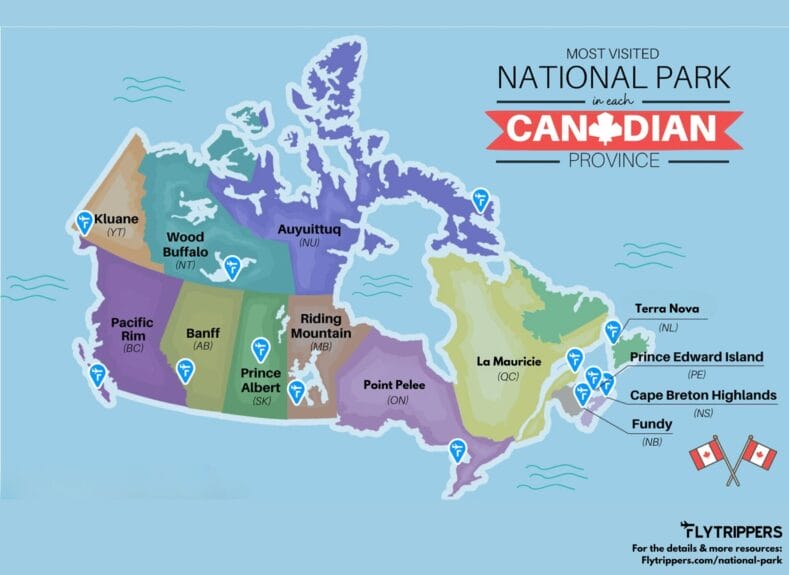
This ranking is based on the most recent data provided by Parks Canada, which compiles the official number of visits for 37 National Parks and National Park Reserves. There are actually 48, but some aren’t in the report so we can assume they aren’t the most popular.
There are also 3 National Marine Conservation Areas (or Marine National Parks) in Canada, but we’ve excluded them from this particular map since they’re not quite parks; visiting water is just not the same. They were technically in first place in both of our most-populous provinces though (Ontario & Quebec). Finally, Parks Canada also manages National Historic Sites, which will be our next map.
This map of the most visited national parks is useful in one of two ways:
- either if you want to visit the parks that most people seem to appreciate
- or maybe if you want to avoid the most crowded parks
Even if we definitely always advocate for avoiding the most touristy destinations (and choosing the more off-the-beaten-path ones), in terms of National Parks, it’s not really the same thing:
- there is often plenty of room for everyone
- there are no locals inside the parks that are sick and tired of the many irresponsible tourists (although maybe the animals are?)
- the part about being overpriced might be true though, and Canada is one of the most expensive countries to travel to already
Anyway, if you want quieter spots, don’t miss our map with the least-visited National Park in each province. Fun fact: did you know that Tuktut Nogait National Park had a total of 0 visitors last year? Yes, zero. Now that is serious social distancing!
And we’ll also have a map of all National Parks in Canada. Sign up for our free newsletter to never miss any content.
The most-visited National Parks in each province
Instead of doing this overview alphabetically or geographically, to keep the theme going let’s look at each province’s most visited National Park from the most visited to the least visited.
Alberta – Banff National Park
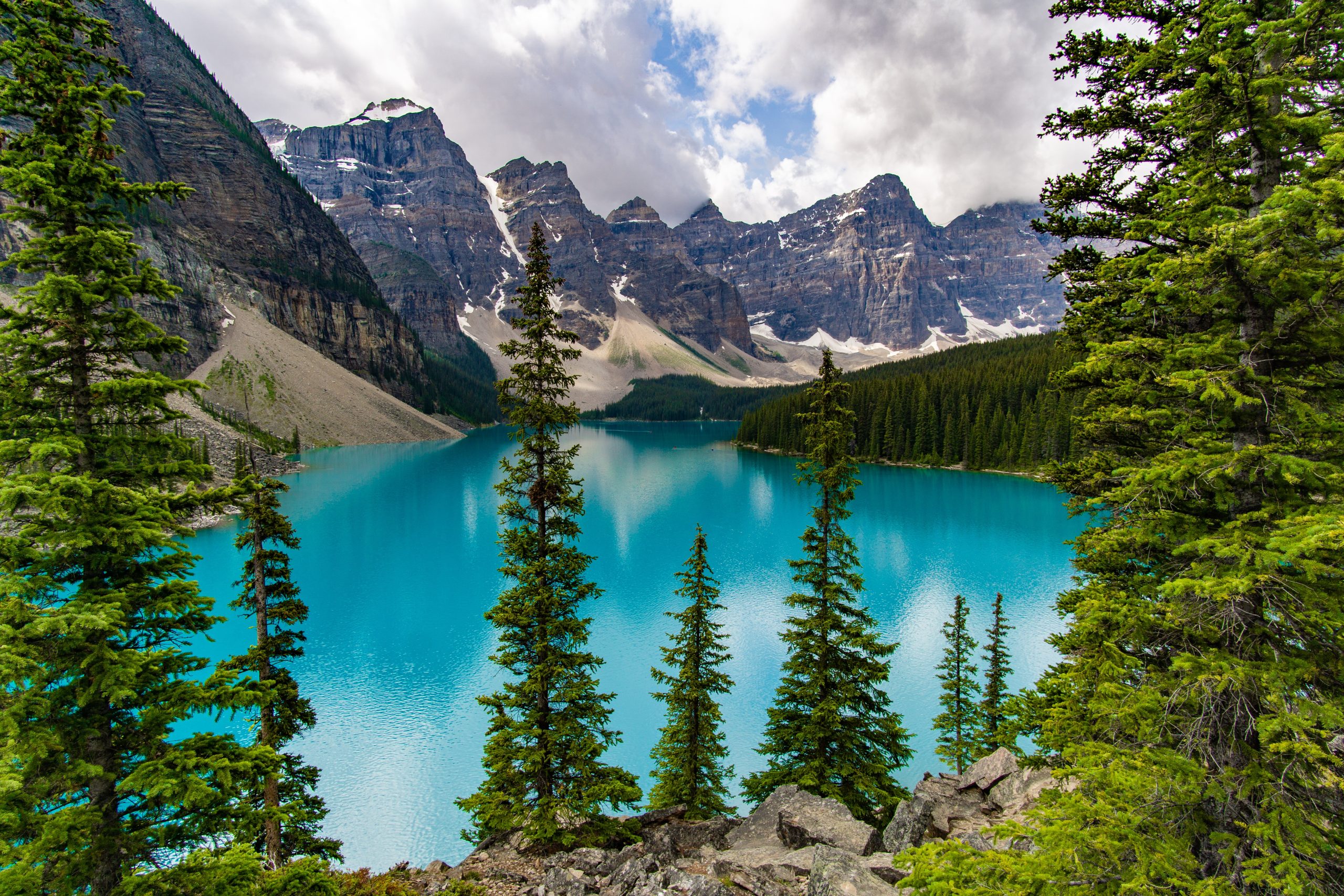
- Visitors: 4,130,081
- Overall rank in Canada: #1 of 37
- Closest airport: Calgary (YYC)
You’ve probably heard of Banff before. Banff is the oldest and most visited park in Canada, and it’s not even close. It has 1.7 million more visitors than Canada’s #2 park Jasper, which is also in Alberta. Both are part of the Canadian Rocky Mountain Parks UNESCO World Heritage Site.
Banff has over 6,000 square kilometers of untouched wilderness. Flytrippers’ other cofounder Kevin actually lived there 2 summers in a row and he says it was one of the best experiences of his life! There is so much to do: hiking, snowboarding (he went back during to winter while living in Calgary), kayaking, and so much more. From watching wildlife, doing outdoor activities, and enjoying the natural beauty, Banff National Park has it all!
It has a range of wildlife like elk, caribou, grizzlies, and bighorn sheep. While finding wildlife, you can climb mountains, or go trekking. Moraine Lake, where large coniferous trees and mountains tower over, is one of the best spots for kayaking. If you’re a bit more adventurous, go to Johnston Canyon for two breathtaking waterfalls, cliffs, and natural pools of fresh spring water.
We’ll have more content about visiting Banff and Alberta soon, but in the meantime, you can read our guest-blogger’s post about hiking the Canadian Rockies in Banff National Park.
British Columbia – Pacific Rim National Park

- Visitors: 1,163,362
- Overall rank in Canada: #3 of 37
- Closest airports: Nanaimo (YCD), Victoria (YYJ), Vancouver (YVR)
Found on beautiful Vancouver Island’s coast, Pacific Rim National Park offers temperate forests, infinite coastlines, and impressive mountain ranges. It beats out 3 other BC parks that are in Canada’s top 10 by a healthy margin.
In Kevin’s opinion, it is one of the most beautiful parks in Canada for sure! You’ll find a wonderful beach where you can surf and huge trees that are quite impressive in the rainforests! This park also stands out for its abundance of wild fauna throughout the forest and along the coast.
The park has 3 separate areas: you can hike the West Coast Trail or kayak and camp your way through the Broken Group Islands or Long Beach. Or learn about the indigenous culture of the Nuu-chah-nulth; and enjoy an array of water sports like swimming in tidal pools, paddle-boarding, and surfing.
We’ll have more content about visiting BC soon too, but we already have a few stories shared by our guest bloggers.
Prince Edward Island – Prince Edward Island National Park
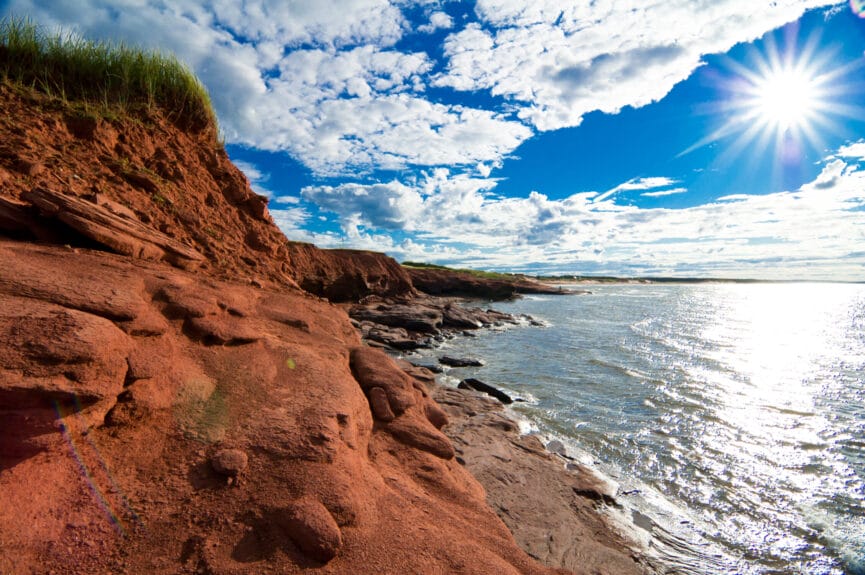
- Visitors: 746,521
- Overall rank in Canada: #5 of 37
- Closest airport: Charlottetown (YYG)
The only province with just one National Park (obviously not surprising given the tiny size of PEI), but at least it ranks pretty high in terms of visitors. This coastal National Park is on the Gulf of Saint Lawrence and offers travelers broad sandy beaches and unique dunes.
Prince Edward Island National Park is mostly a flat and low-lying national park and is therefore perfect for camping on the beach or exploring the salt marshes teeming with elegant birdlife, especially the piping plover that breeds here. The famous “Green Gables” farm from “Anne of Green Gables” is located in the park as well.
I have been to this National Park on a summertime trip as a kid and have great memories of the coastline and camping at nearby Cavendish Beach. I haven’t gone camping ever since though, so even though we’ll be posting more articles about our own trips to share our experiences with you and help you travel from home during the pandemic, don’t expect camping trip stories from me—that was definitely an outlier.
Hopefully, some of you are avid campers and interested in sharing your stories from around the world as guest-bloggers to help other travelers!
Ontario – Point Pelee National Park
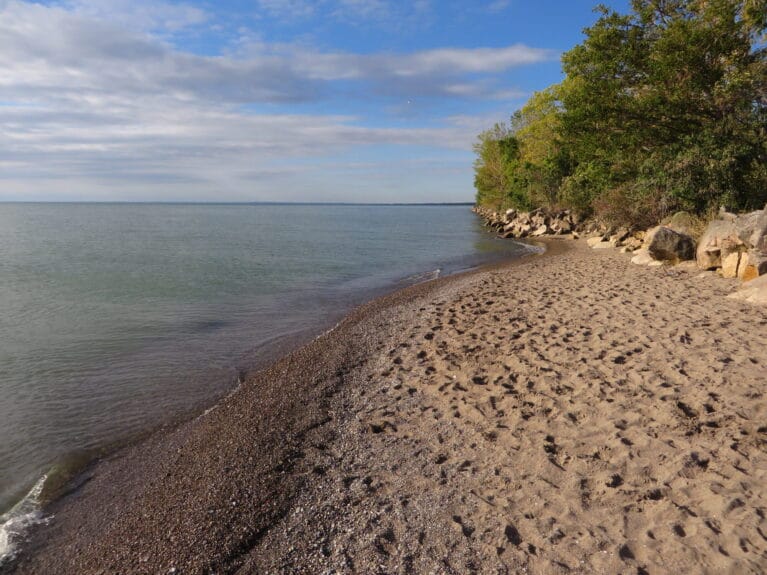
- Visitors: 492,122
- Overall rank in Canada: #8 of 37
- Closest airports: Toronto-Pearson (YYZ), Toronto-Bishop (YTZ), Hamilton (YHM)
Point Pelee National Park is located in southernmost Ontario, near Lake Erie, about an hour south of Windsor.
The park protects a unique peninsula known as the southernmost point of mainland Canada. Its diverse ecosystem includes marshes, beaches, and hardwood forests, providing a haven for a variety of wildlife, including hundreds of species of migratory birds. If you’re a birdwatcher, this is a must-see, especially in spring and autumn.
In addition to birdwatching, the park offers scenic hiking trails and the chance to explore the marshes by kayak or canoe. And of course, a visit wouldn’t be complete without a photo at the famous tip of the point, where the land seems to disappear into Lake Erie.
Manitoba – Riding Mountain National Park
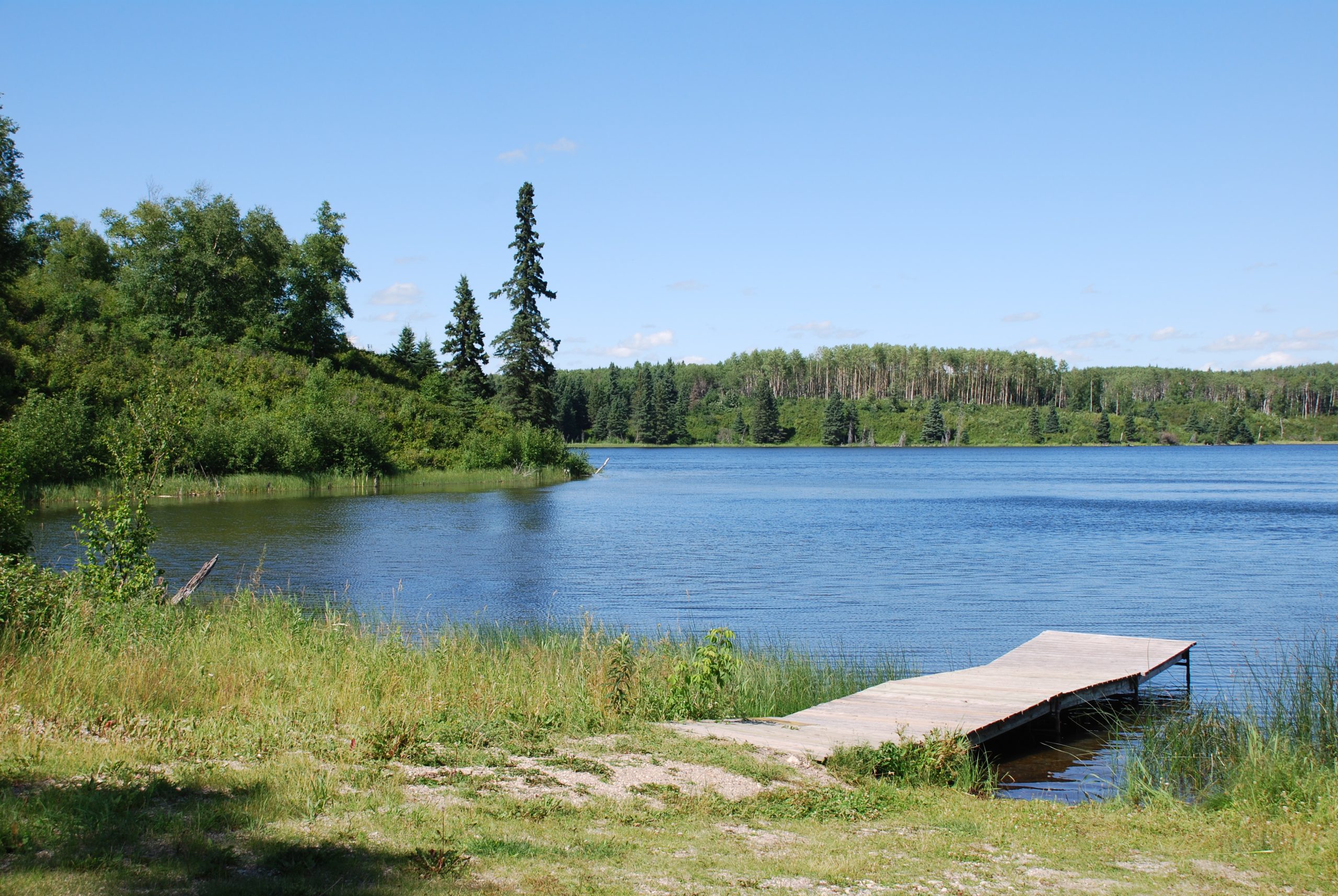
- Visitors: 336,560
- Overall rank in Canada: #12 of 37
- Closest airports: Brandon (YBR), Winnipeg (YWG)
Riding Mountain National Park’s forested landscape stands out from the prairie farmland in the surrounding area. It is by far Manitoba’s most visited park.
It was created to protect the 3 different ecosystems that converge there, namely the upland boreal forest, aspen parkland, and fescue prairie. Covering nearly 3,000 square kilometers, the park also has one of the largest black bear populations in North America.
Fun fact: a labor camp for German prisoners-of-war was located in the park during World War II. It was the only in North America with no fencing, it was so isolated that it wasn’t necessary. Prisoners were paid to cut down trees and were allowed to use their pay to order from the Eaton’s catalogue. How Canadian.
New Brunswick – Fundy National Park
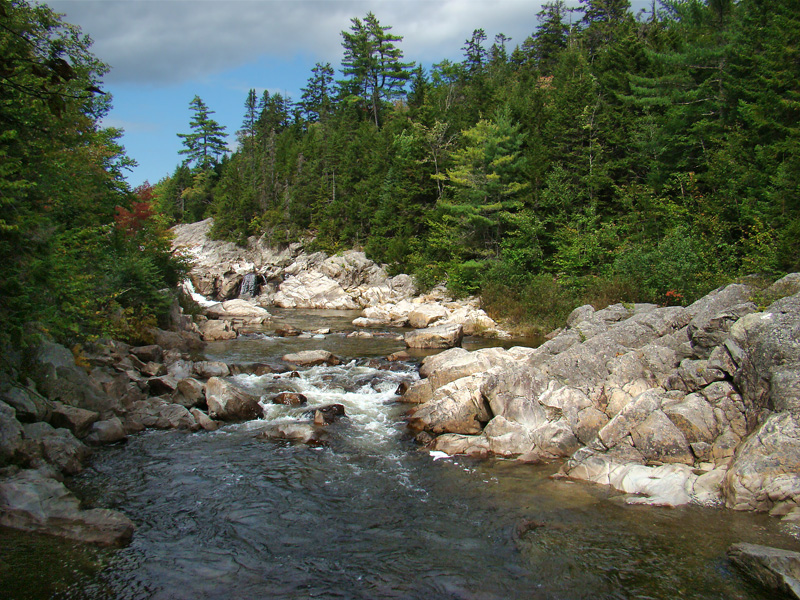
- Visitors: 303,575
- Overall rank in Canada: #13 of 37
- Closest airports: Moncton (YQM), Saint John (YSJ), Fredericton (YFC)
Fundy National Park is especially known for the world’s highest tides in the Bay of Fundy. It closely beats out New Brunswick’s other park as the most visited in Canada’s only officially bilingual province.
When the water recedes, you can explore the seafloor, but 15 meters of water (50 ft) cover it back up at high tide. And the rugged coastline looks great at all times. There are 25 hiking trails and as many waterfalls. The park has a red covered bridge that is very popular, but just to be clear: it is not the world’s longest covered bridge, which is also located in New Brunswick (further west).
Saskatchewan – Prince Albert National Park
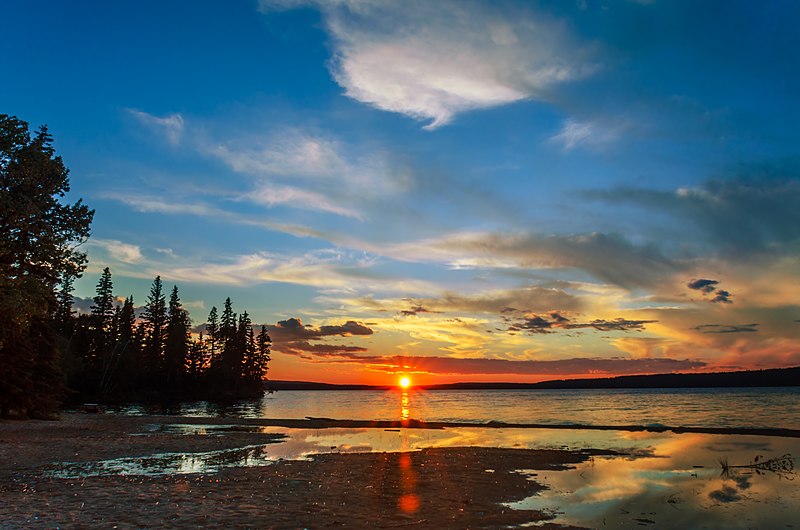
- Visitors: 287,372
- Overall rank in Canada: #14 of 37
- Closest airport: Saskatoon (YXE)
Prince Albert National Park was the only one in Saskatchewan for a long time and is still by far the most visited in this province that is mostly associated with endless prairies. The central Saskatchewan park is known not so much for the views as it is for the many recreational opportunities in the wilderness.
You can hike in boreal forests, take advantage of the beautiful lakes, and watch pretty sunsets like the one pictured above.
Quebec – La Mauricie National Park

- Visitors: 278,923
- Overall rank in Canada: #15 of 37
- Closest airports: Quebec City (YQB), Montreal (YUL)
As mentioned, we removed the National Marine Parks, and the one in Quebec (Saguenay-St. Lawrence) is very popular, and actually ranks #3 in the country when considered a park. Quebec also has its own popular and very developed network of over 20 Provincial Parks (although they are called “National” Parks too, which is a bit confusing).
Anyway, la Mauricie National Park, located in the heart of Quebec, is a natural gem often overshadowed by its better-known neighbors, but it deserves a special place in the hearts of nature lovers. Nestled between the Shawinigan and La Tuque regions, it offers spectacular beauty, with its dense forests, crystal-clear lakes, and impressive waterfalls.
Although a little less frequented than other national parks in the country, the park offers a multitude of activities for outdoor enthusiasts. With its 500 square kilometers of varied landscapes, it offers hiking, canoeing, kayaking and even camping in remote locations for total immersion. The Saint-Jean and Wapizagonke lakes, as well as the majestic Chute-du-Diable waterfall, are must-sees for visitors.
La Mauricie Park is also renowned for its diversity of wildlife, including black bear and beaver populations, and hiking trails such as the Sentier de la Chute-du-Diable, which leads to spectacular views of the waterfall and surrounding area. It’s the perfect place to disconnect and recharge, while still being relatively accessible from Quebec’s major cities.
Nova Scotia – Cape Breton Highlands National Park
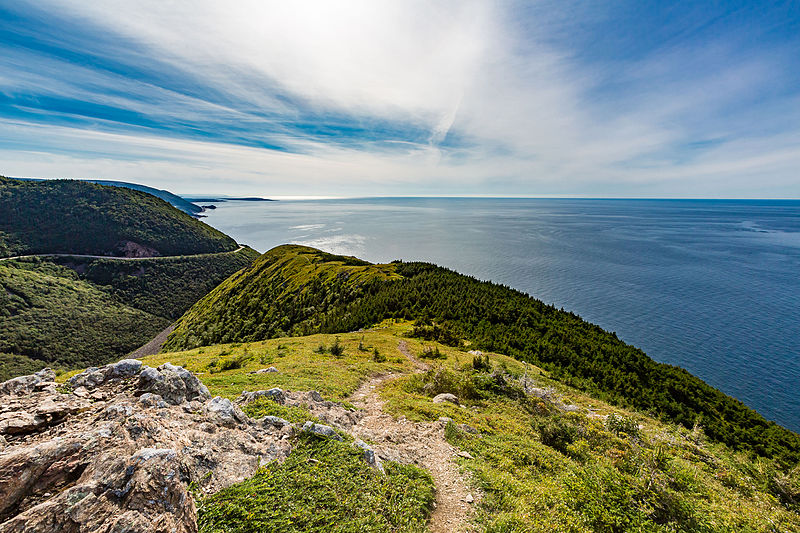
- Visitors: 277,203
- Overall rank in Canada: #16 of 37
- Closest airports: Sydney (YQY), Halifax (YHZ)
As you might have deduced from the name, Cape Breton Highlands National Park is on Cape Breton Island, the large island to the east of the peninsula where most of Nova Scotia is located. It is by far the province’s most visited park and was the first one in all of Atlantic Canada.
Another one of the coastal National Parks, it features amazing ocean views. There are also great mountain views, with many deep-cut canyons. About one-third of the renowned Cabot Trail scenic road is located in the park. There are many hikes offering exceptional vistas, like the Skyline Trail pictured above. There are also a few beaches, both on the ocean and on lakes.
Yukon – Kluane National Park

- Visitors: 47,098
- Overall rank in Canada: #21 of 37
- Closest airport: Whitehorse (YXY)
You’ll find the highest peak in Canada in Kluane National Park, which is Mount Logan. In fact, 17 (!!!) of Canada’s 20 highest mountains are in the Saint Elias Mountains which are at the heart of Kluane.
The park is also the largest non-polar icefield in the world. Bordering the US state of Alaska, Kluane is another park that is a UNESCO World Heritage Site, jointly with the US National Park just across the border.
Visiting one of Canada’s 3 territories is definitely something I will do at some point before March 2025 before flights are no longer bookable with Aeroplan at the current exceptional rate. But I just haven’t decided which one yet, as all of them have something truly unique!
Newfoundland and Labrador – Terra Nova National Park
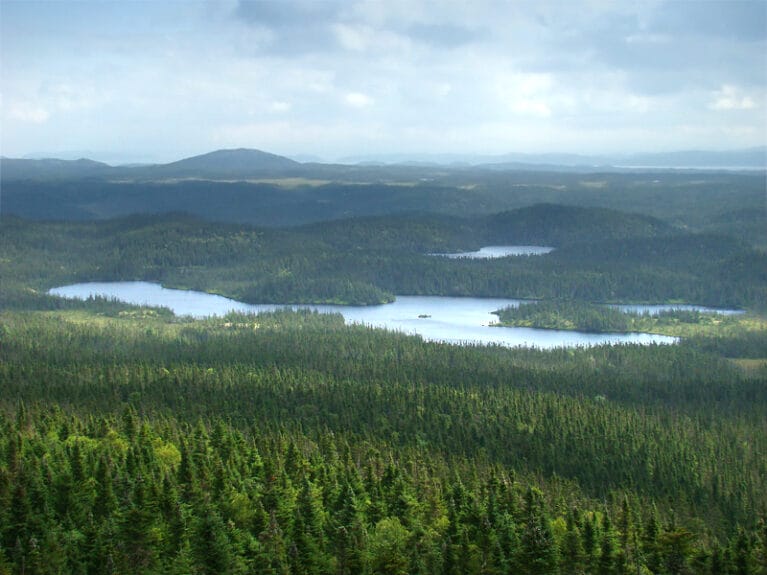
- Visitors: 45,191
- Overall rank in Canada: #22 of 37
- Closest airports: Deer Lake (YDF), Gander (YQX), St. John’s (YYT)
Terra Nova National Park, on Newfoundland’s east coast, was often overshadowed by the more famous Gros Morne, but it’s well worth a visit. It’s a place where the boreal forest meets the Atlantic Ocean, offering a unique blend of rugged coastlines, peaceful bays, and vast wilderness.
The park is an outdoor enthusiast’s paradise, with numerous opportunities for hiking, kayaking and wildlife observation. Trails like Mount Stamford offer spectacular panoramic views, while sheltered bays are ideal for exploring by canoe or kayak. It’s also a great place for iceberg and whale watching, depending on the season.
Less crowded than other Canadian parks, Terra Nova offers total immersion in nature, with campsites by the sea and refuges deep in the forest for an authentic experience. It’s the perfect place for those looking to discover Newfoundland’s unspoiled beauty, far from the crowds.
Northwest Territories – Wood Buffalo National Park
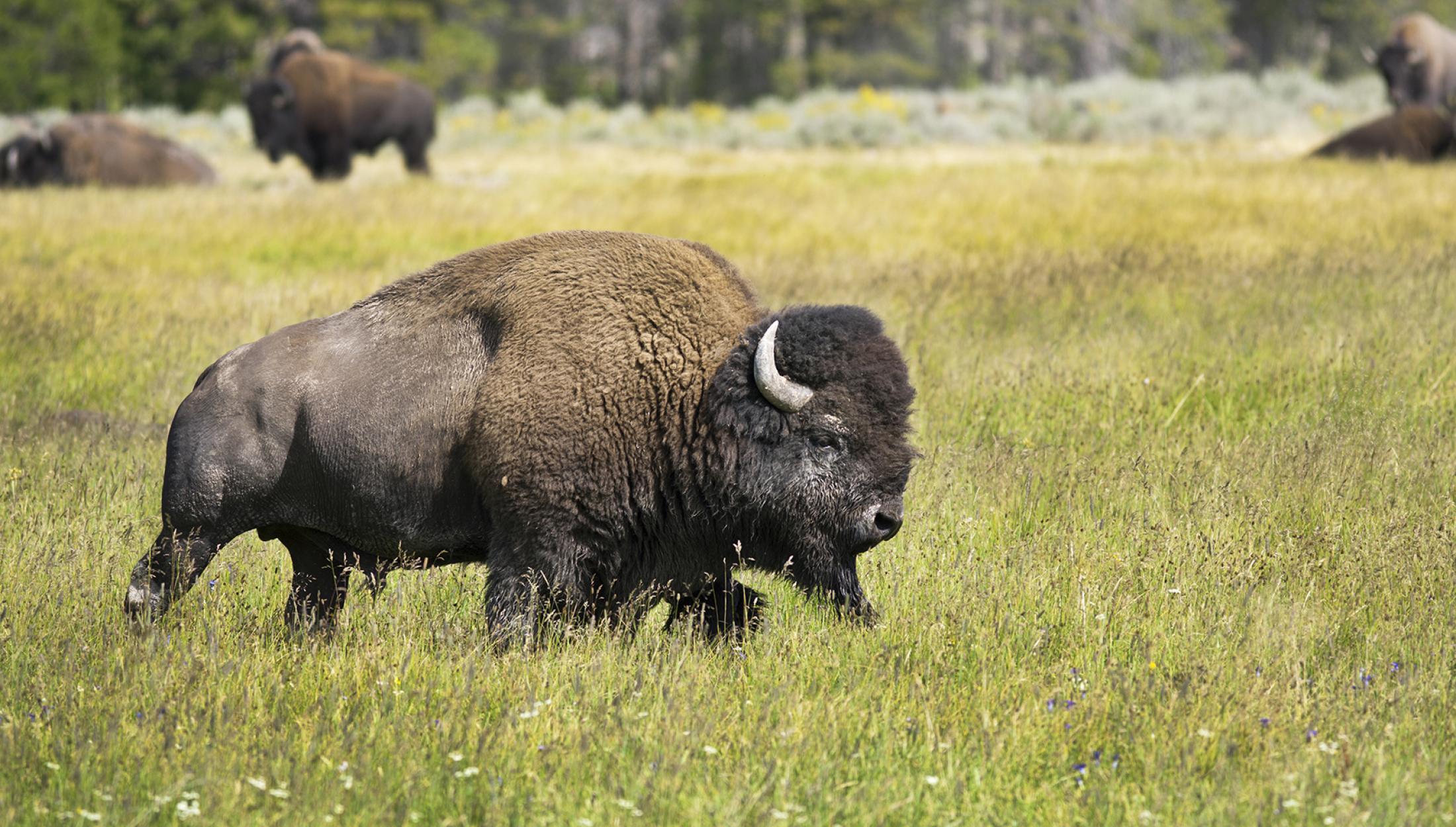
- Visitors: 2,399
- Overall rank in Canada: #29 of 37
- Closest airport: Yellowknife (YZF)
Wood Buffalo National Park is Canada’s largest and one of the world’s largest. It is actually located in both the Northwest Territories and Northern Alberta. Parks Canada classifies it as part of the NWT, so it is by far the most visited in the huge territory, despite a very low number.
It is the world’s largest “dark-sky preserve”, which means that artificial light pollution is restricted to promote astronomy. It is also a UNESCO World Heritage Site, notably because it protects the largest population of wild bison in North America (informally called “wood buffaloes”, hence the park name).
The park is also the only known natural nesting place of the whooping crane. Finally, it features the world’s largest inland delta (that of the Peace and Athabasca rivers).
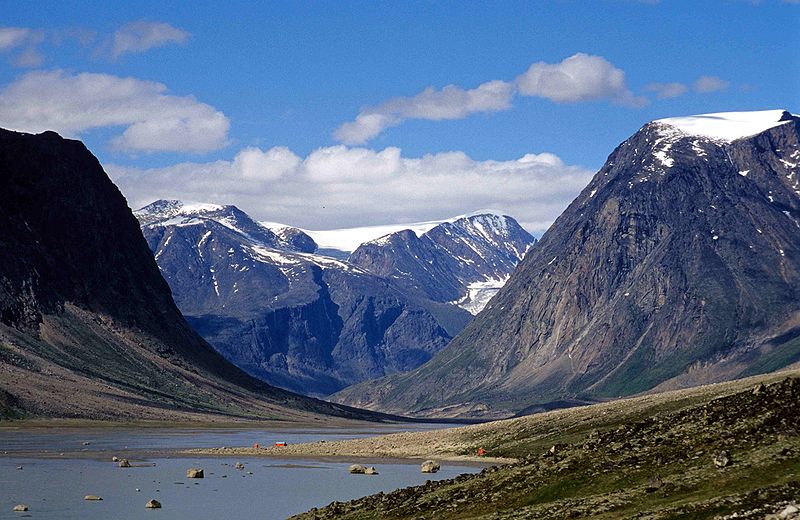
- Visitors: 256
- Overall rank in Canada: #32 of 37
- Closest airport: Iqaluit (YFB)
Auyuittuq National Park is located on Baffin Island, which is the largest island in Canada and the fifth-largest in the world. The park had only 853 visitors last year, which is pretty incredible. You are sure to have a lot of space. You’ll also see some of the highest peaks on the Canadian Shield region and some unique Arctic wilderness.
The park is located almost entirely within the Arctic Circle. I won’t even pretend I had ever heard of this park, so I’ll conclude this post with Parks Canada’s description since it is very poetic: “a zig-zag skyline of craggy granite peaks and glittering glaciers overlooks tundra valleys and steep-walled fiords whose winding waterways teem with narwhal and ringed seals, Auyuittuq is a diverse and grand-scale Arctic experience.”
Learning how to travel for less
Join over 100,000 savvy Canadian travelers who already receive Flytrippers’ free newsletter so we can help you travel for less (and inspire you, too)!
Summary
This map shows the most visited National Park in each Canadian province. Most of them look simply stunning and we’ll have a lot more Canada content in the coming weeks!
What would you like to know about the National Parks? Tell us in the comments below.
See the flight deals we spot: Cheap flights
Discover free travel with rewards: Travel rewards
Explore awesome destinations: Travel inspiration
Learn pro tricks: Travel tips
Featured image: Map of most visited National Park in each Canadian province (image credit: Flytrippers)

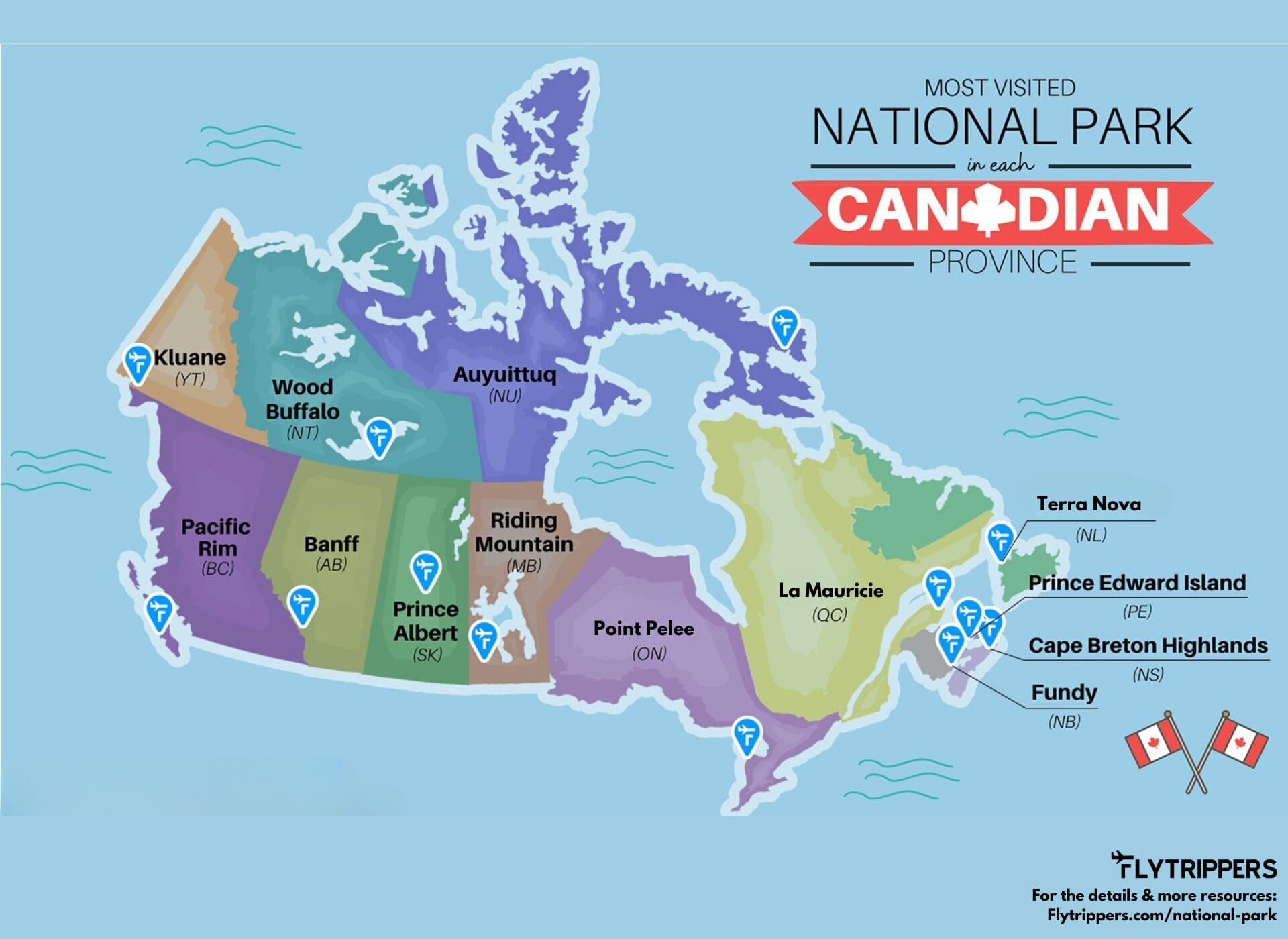
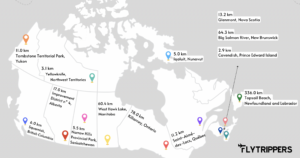
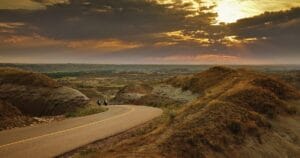
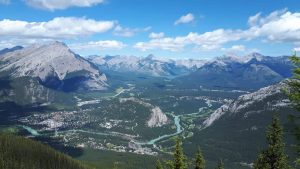
so true!!
Andrew, check out Baffin Island! I went to Pond Inlet last year with camped on an ice floe with Black Feather Co. Ltd. It was such an amazing experience! It was my first time camping on ice, seeing polar bears, narwhals and belugas. 24 hours of sunlight and great weather. The season is very short because you can’t go too early because you need the ice to start melting, that’s when nature comes to life but you can’t go too late because then it is unsafe to snowmobile on the ice. Forgot to mention we saw tons of birds!!
That sounds really awesome! The hardest part about planning my trip to the Territories is actually choosing where to go, there seems to be unique experiences everywhere :O